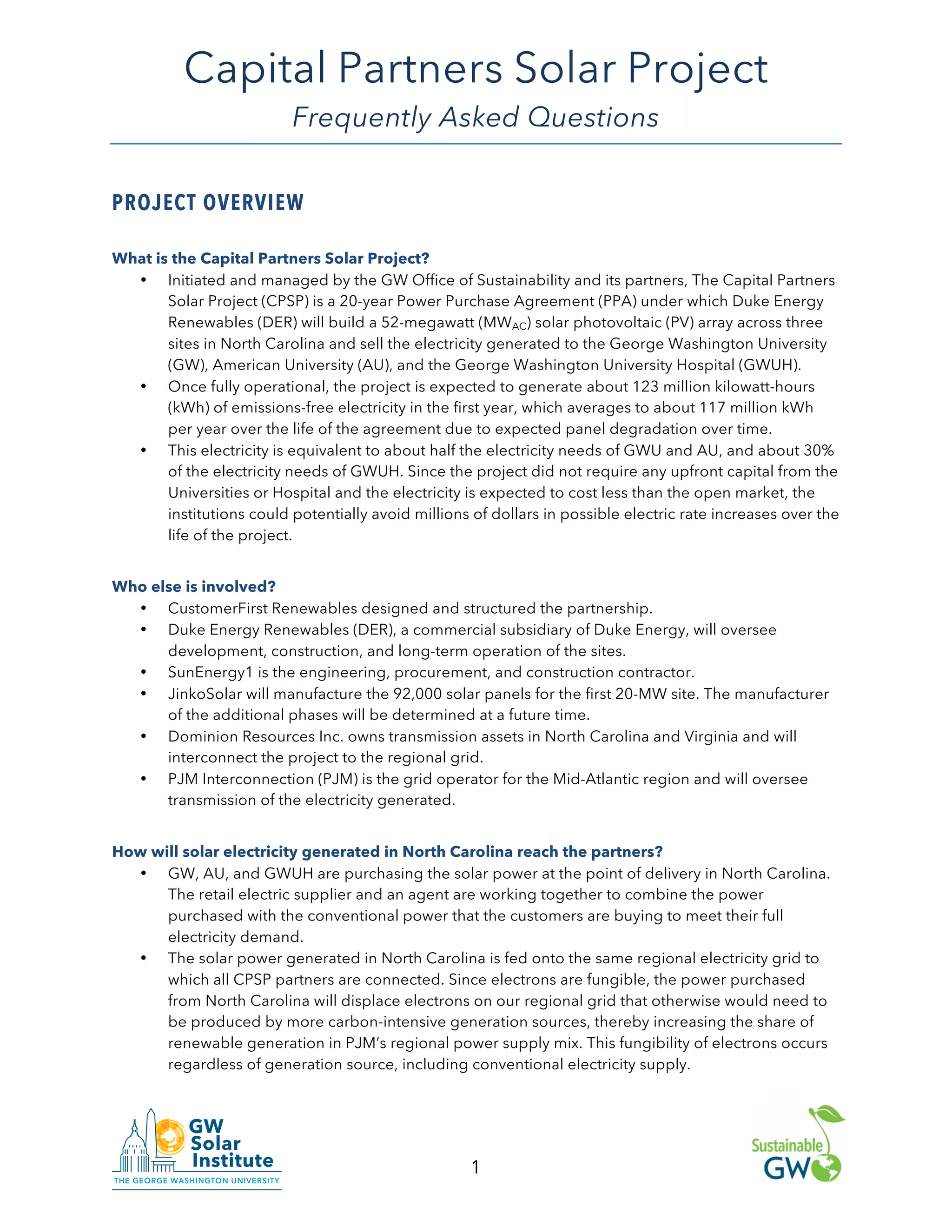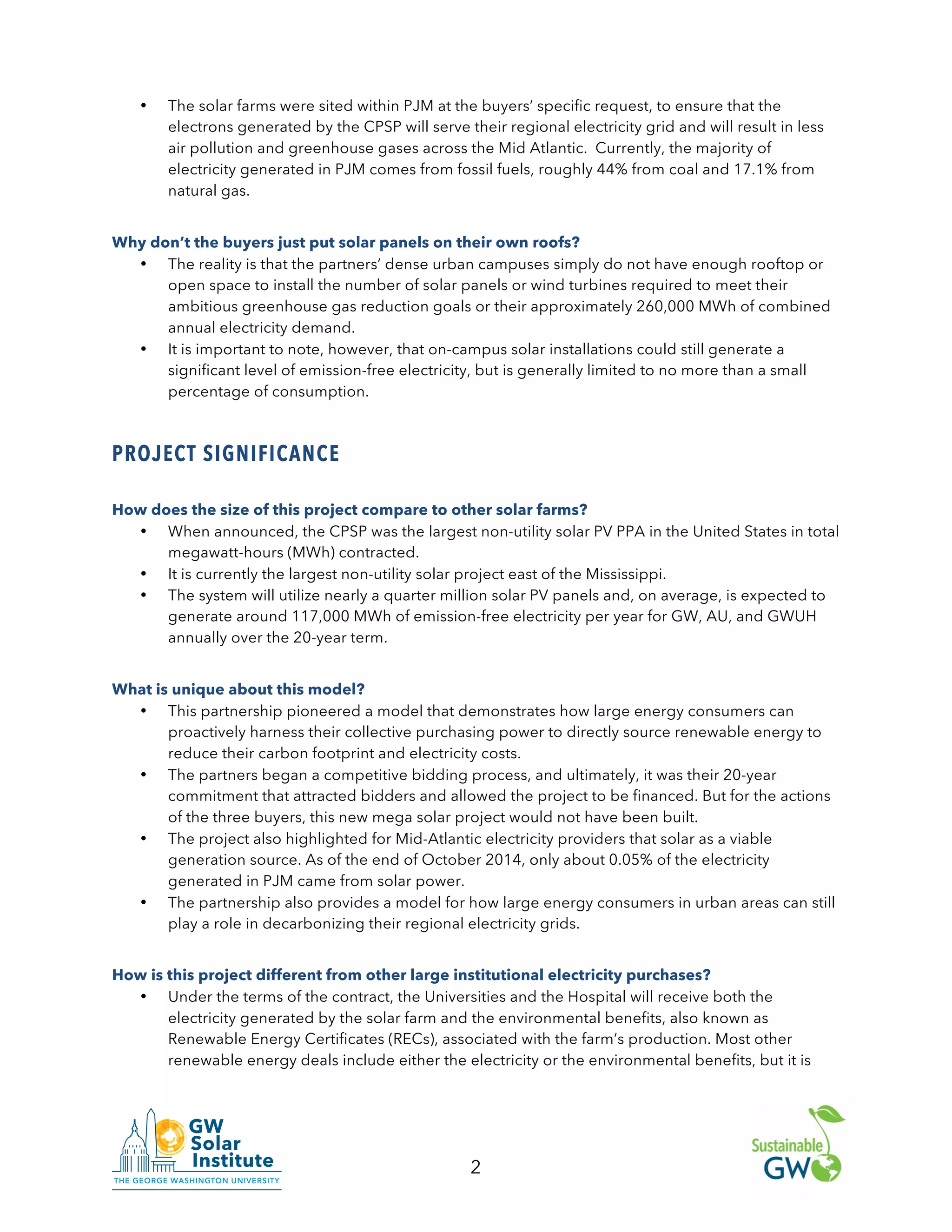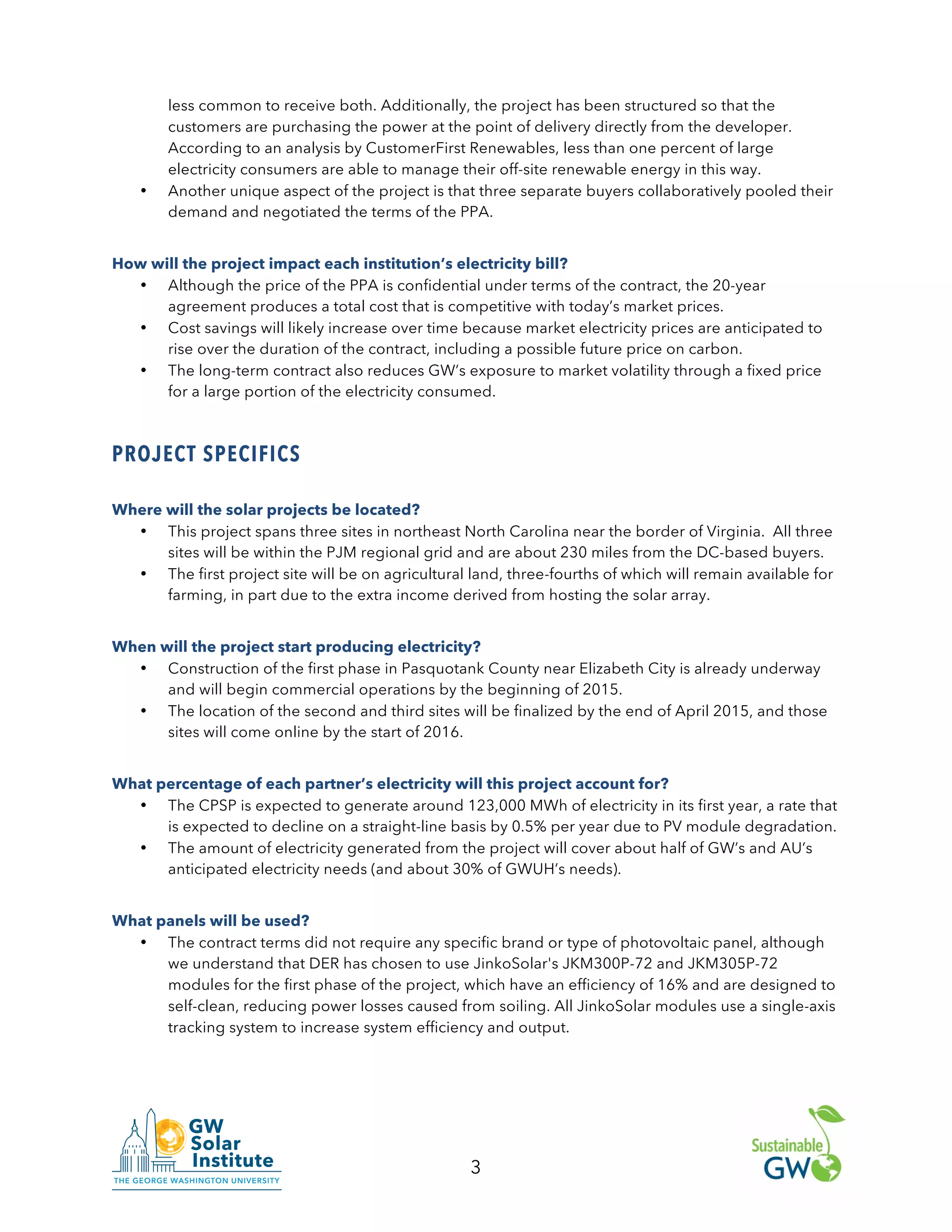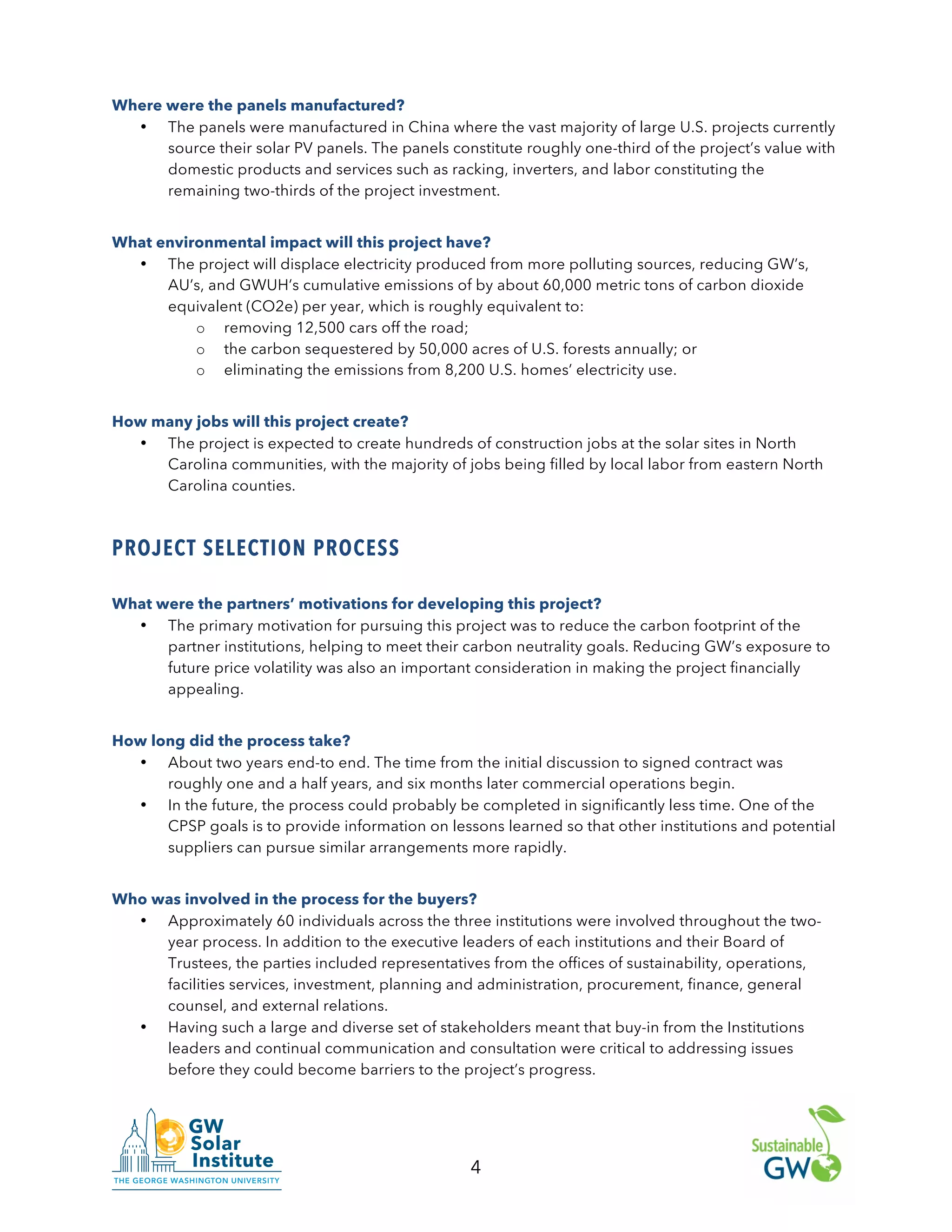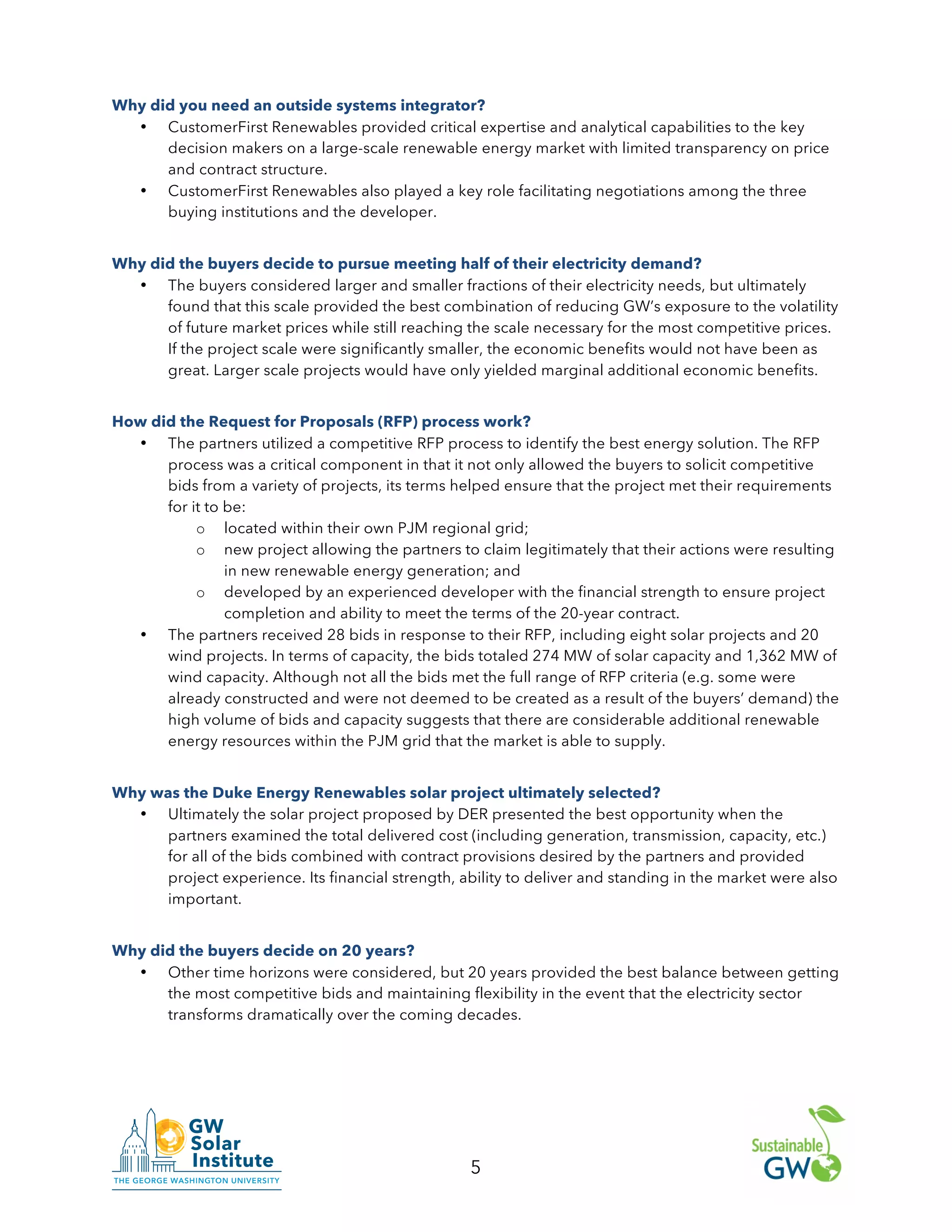The Capital Partners Solar Project is a 20-year agreement where Duke Energy Renewables will build three solar sites totaling 52 megawatts in North Carolina to provide electricity to George Washington University, American University, and George Washington University Hospital. This project represents the largest non-utility solar power purchase agreement in the eastern US and will generate enough electricity to meet around half the needs of the two universities and 30% for the hospital. The three institutions worked together over two years through a competitive bidding process to identify this project as providing the best long-term renewable energy solution.
